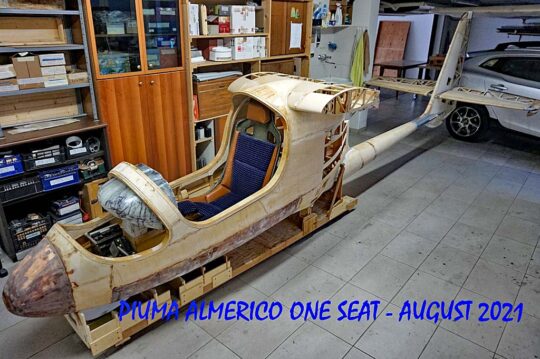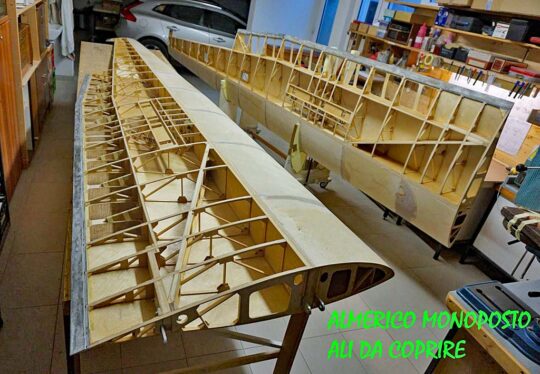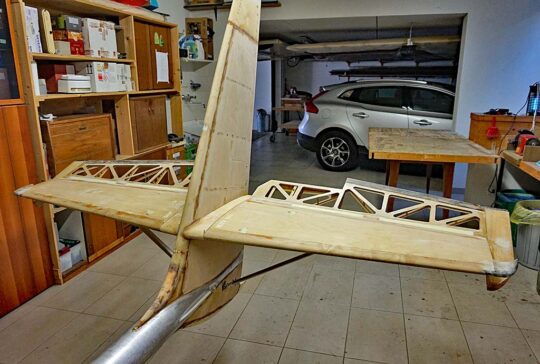
Article Update — Photos of the designer’s own project… see at bottom. —DJ 3/2/22 A steady stream of readers ask about motorgliders. This is one of recreational aviation’s most interesting aircraft types. Motorgliders can soar reasonably well for those interested in working thermals or ridge lift to ascend without motor noise. Many others might never shut down the engine and soar but are intrigued with efficient cross country flying. In a motorglider, a pilot can be more confident as the aircraft can glide far further than other types, providing a broader safety margin. From a one-man operation comes the Italian Piuma Project. Designer and builder Tiziano Danieli describes his creations as “a friendly family of ultralight* motor gliders.” Trouble Is… Motorgliders Are Expensive …Or, Are They? Fully manufactured LSA motorgliders may get you airborne quickly whereas you need to build your Piuma, but the factory-built version will cost substantially more.


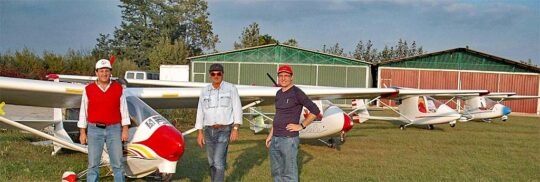 Many others might never shut down the engine and soar but are intrigued with efficient cross country flying. In a motorglider, a pilot can be more confident as the aircraft can glide far further than other types, providing a broader safety margin.
From a one-man operation comes the Italian
Many others might never shut down the engine and soar but are intrigued with efficient cross country flying. In a motorglider, a pilot can be more confident as the aircraft can glide far further than other types, providing a broader safety margin.
From a one-man operation comes the Italian 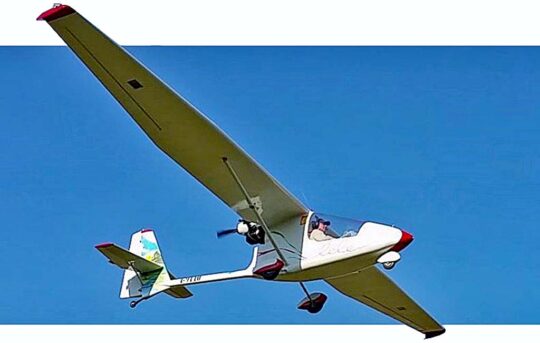 If
If 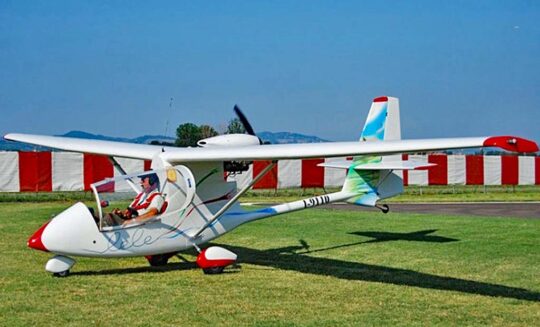 Readers who want to save money acquiring a motorglider may finally have a good option: the Piuma Project — composed of five models, the Original, Evolution, Tourer, Twin Evolution, and Almerico. The latter two are two seaters, though Tiziano admits his primary interest is the single place model.
"The first idea was to design, to build and to fly a little one seat ultralight motorglider, for personal use, very safe in flight, simple in the construction, and easy to pilot,” said Tiziano. "I wanted it to have flight characteristics and comfort higher than various tube-and-fabric ultralights of that time." (This was at the end of the '80s.)
Readers who want to save money acquiring a motorglider may finally have a good option: the Piuma Project — composed of five models, the Original, Evolution, Tourer, Twin Evolution, and Almerico. The latter two are two seaters, though Tiziano admits his primary interest is the single place model.
"The first idea was to design, to build and to fly a little one seat ultralight motorglider, for personal use, very safe in flight, simple in the construction, and easy to pilot,” said Tiziano. "I wanted it to have flight characteristics and comfort higher than various tube-and-fabric ultralights of that time." (This was at the end of the '80s.)
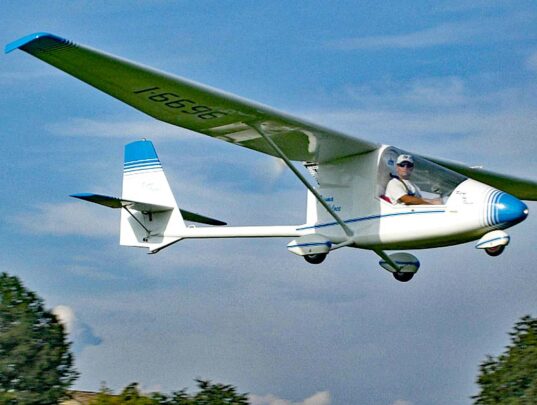 The first flights of the Piuma Original date back to 1990. This was followed with the Tourer.
The first flights of the Piuma Original date back to 1990. This was followed with the Tourer.
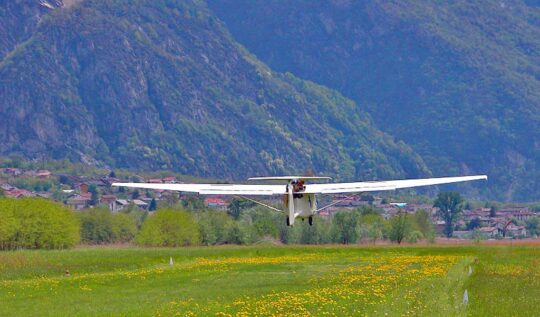 A Piuma Tourer confirmed the suitability of the name by flying from Venice to Sicily one year (1,250 kilometers or 776 miles) and from Venice to Paris another year (900 kilometers or 560 miles). These flights confirm, Tiziano said, "that even with a small motorglider, I can do great trips."
He has also designed and drawn two-seater versions: the Piuma Twin, later replaced with the Piuma Twin Evolution, that incorporates all the improvements suggested during nine years of Piuma Twin construction: a 20 centimeter (8 inch) longer front fuselage, for better balance without ballast and a rear fuselage similar to the single seat Piuma Evolution.
The designer's interest and that of many potential buyer/builder may remain with the single seat models. Not only will they be less costly but with only a single seat, pilots need only satisfy themselves.
A Piuma Tourer confirmed the suitability of the name by flying from Venice to Sicily one year (1,250 kilometers or 776 miles) and from Venice to Paris another year (900 kilometers or 560 miles). These flights confirm, Tiziano said, "that even with a small motorglider, I can do great trips."
He has also designed and drawn two-seater versions: the Piuma Twin, later replaced with the Piuma Twin Evolution, that incorporates all the improvements suggested during nine years of Piuma Twin construction: a 20 centimeter (8 inch) longer front fuselage, for better balance without ballast and a rear fuselage similar to the single seat Piuma Evolution.
The designer's interest and that of many potential buyer/builder may remain with the single seat models. Not only will they be less costly but with only a single seat, pilots need only satisfy themselves.
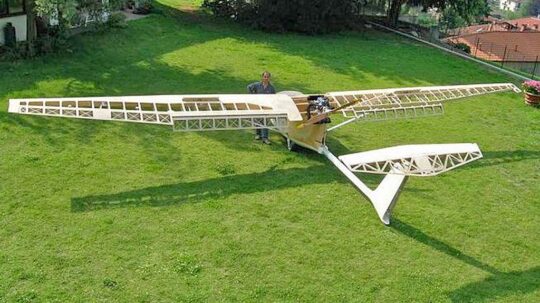 “Construction time depends on the builder's meticulousness,” said Tiziano. “Normally, about 1,000 hours are sufficient for a person with limited woodworking experience to complete the work. Plans are composed of large technical sheets (24 x 40 inches) with lots of details.”
“Some component elements require the use of a lathe and/or milling machine, but most of the construction may be built without special tools. It is very easy,” said Tiziano. He completed his Piuma Original after 18 months of work, in a two-car garage measuring 21 feet long and 13.2 feet wide.
Drawings show multiple views and have all the details. A "Construction Book" is provided with instructions and references to the drawings that explain more details relating to each model. Drawings and the book also note all the materials to be purchased specifying the quantity and quality of each necessary element, from the aviation birch plywood to the aluminum alloy parts and including Dacron fabric, glues, and more.
“Construction time depends on the builder's meticulousness,” said Tiziano. “Normally, about 1,000 hours are sufficient for a person with limited woodworking experience to complete the work. Plans are composed of large technical sheets (24 x 40 inches) with lots of details.”
“Some component elements require the use of a lathe and/or milling machine, but most of the construction may be built without special tools. It is very easy,” said Tiziano. He completed his Piuma Original after 18 months of work, in a two-car garage measuring 21 feet long and 13.2 feet wide.
Drawings show multiple views and have all the details. A "Construction Book" is provided with instructions and references to the drawings that explain more details relating to each model. Drawings and the book also note all the materials to be purchased specifying the quantity and quality of each necessary element, from the aviation birch plywood to the aluminum alloy parts and including Dacron fabric, glues, and more.
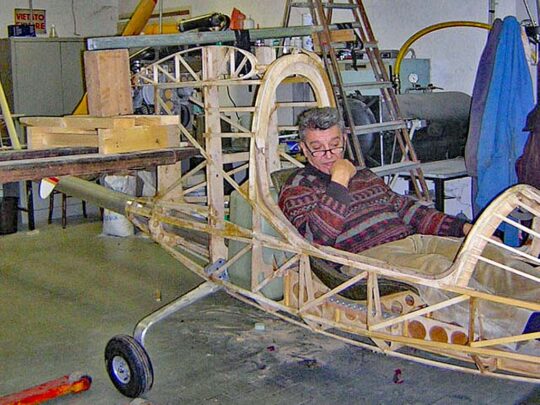 A "Project Book" is not necessary for the normal builder, but it is very important for those who want to know the project better. The Project Book contains design considerations; lots of drawings of the fuselage, wings, tail, and more; structural calculations; plus flying characteristics and speeds.
The construction plan set sells for $200-$400 (each model is somewhat different in price) in early 2022. Tiziano reported, "The cost of materials, excluding engine and instruments, is around $4,000 (at 2020 prices).”
Based on that number my guesstimate for total price with a used Rotax two-stroke engine, basic analog instruments, and minimal paint might be $15,000 or less.
A "Project Book" is not necessary for the normal builder, but it is very important for those who want to know the project better. The Project Book contains design considerations; lots of drawings of the fuselage, wings, tail, and more; structural calculations; plus flying characteristics and speeds.
The construction plan set sells for $200-$400 (each model is somewhat different in price) in early 2022. Tiziano reported, "The cost of materials, excluding engine and instruments, is around $4,000 (at 2020 prices).”
Based on that number my guesstimate for total price with a used Rotax two-stroke engine, basic analog instruments, and minimal paint might be $15,000 or less.
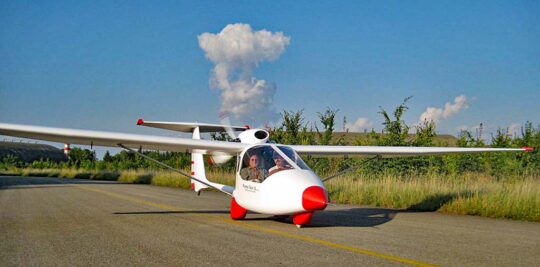 Professional build centers have been highlighted as one of Mosaic’s many aspects. Everyone including FAA recognizes that kits built with oversight from people who know the aircraft and the process of construction makes for better, safer airplanes. Because safety is FAA's main consideration, professional builder-assist centers are expected to part of the new regulation. I have been predicting we will see the NPRM by Oshkosh 2022 (mere months away now).
Professional build centers have been highlighted as one of Mosaic’s many aspects. Everyone including FAA recognizes that kits built with oversight from people who know the aircraft and the process of construction makes for better, safer airplanes. Because safety is FAA's main consideration, professional builder-assist centers are expected to part of the new regulation. I have been predicting we will see the NPRM by Oshkosh 2022 (mere months away now).
